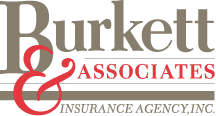 Most people have heard the term underwriting but may not have an idea of the functionality of it and/or how it relates to the insurance industry. Most importantly, underwriting evaluates many factors to determine whether or not the insurance company wishes to take the risk of insuring a potential customer and at what cost. So, because underwriting is an integral part of the insurance approval progression, what is a named insured in underwriting? If you don’t know, you may wish to read on!
Most people have heard the term underwriting but may not have an idea of the functionality of it and/or how it relates to the insurance industry. Most importantly, underwriting evaluates many factors to determine whether or not the insurance company wishes to take the risk of insuring a potential customer and at what cost. So, because underwriting is an integral part of the insurance approval progression, what is a named insured in underwriting? If you don’t know, you may wish to read on!
Defining a Named Insured on an Insurance Policy
All commercial and personal insurance policies have what is referenced as a “named insured” as outlined on the Declarations Page of the policy. It references the person, person(s), firm, or business who is designated by name (or names) in the insurance policy. Basically, this person has control of the policy. What this means is the named insured is the person who files claims, pays the premiums, cancels the policy, adjusts coverage limits if necessary, and adds endorsements.
Underwriters’ Risk on Adding Additional Named Insureds
Underwriters consider many risks when deciding whether to accept or decline an insurance application, but one risk that often is disregarded is incorrectly underwriting multiple named insureds. Having one person cited as the named insured is a normal process; however, when the underwriters add other named insureds on the policy, things can get riskier. At this point, one is designated as the “first named insured” who is the one exercising control over the other additional named insureds.
This is where the underwriters job gets more difficult. Whenever there is a request or need to add additional insureds to an insurance policy, he/she should assess the following circumstances BEFORE agreeing to accept the risk.
Insurable Interest/Ownership Interest- Persons, organizations, or firms must have an insurable interest before adding this named interest to the policy. Insurable interest means if a loss happens, that person or entity would experience a financial loss or hardship.
Combinability- The underwriter must justify whether the named insureds are combinable. Common majority ownership means a person or group of people own more than 50 percent of each entity. They must share common majority interest, or it could lead to significant issues and shouldn’t be written.
So, once that has been reviewed and there is justification of the two listed items above, an underwriter will typically feel satisfied with adding these additional named insureds. Keep in mind though, that the first named insured is still the one exercising management control over the others. Without confirmation of all these factors, it could lead to legal issues among the entities.
Contact Burkett & Associates Today!
If you have any questions or concerns regarding the underwriting process of named insureds and additional insureds, we are here to help. You can count on our specialized underwriters to verify insurable interest for each named insured and can assist with any concerns of whether to add other named insureds to the policy. We are here for all your Alabama insurance needs. Don’t wait! Call today at 256-704-7400.






